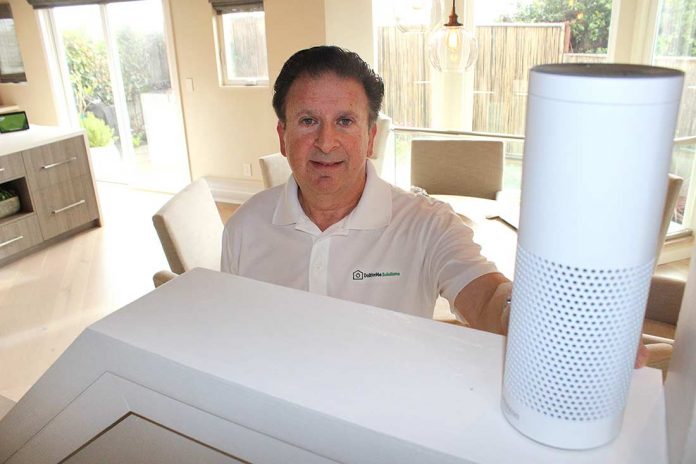
“Smart” gadgets dominate every aspect of modern life, from watches, phones, TVs, cars to even homes. With the prices of such gear dropping over the past decade, smart tech can make popular gifts during the holiday season.
But the festivities are in the rear-view mirror, and reality is setting in: The gadgets are there, but do you know how to operate them? That’s another story.
Enter Robert Spivack.
Spivack is the founder of Gilroy-based DoItForMe.Solutions, who specializes in installing, troubleshooting and ongoing support for the smart technology that is pervading homes.
The accessibility, and quantity, of technology today was difficult to fathom even 20 years ago. The voice-activated Amazon Alexa can turn on lights, TVs and other things, while Nest thermostats allow users to set the temperature of their home from their phone before they leave work. Ring doorbells include security cameras, allowing users to see from their phones what is going on at their front door while they may be on the other side of the country.
Smart tech is a great way to provide peace of mind and simplicity for those who just want to relax after a long day’s work. But sometimes, this technology can do anything but that.
Some devices may not sync with each other due to being different brands. A home’s wireless internet might not be strong enough to power all devices at the same time. And sometimes, things just don’t work for no reason at all.
Spivack said the affordability of smart home technology in recent years has made it easier and less of a risk for homeowners to dabble in the equipment.
“Everything’s been around for 40 years,” he said. “The difference is it used to be $100,000 minimum. Now you can start with a $50, $100 product.”
That’s also a double-edged sword, he warned.
“You can get started very easily,” Spivack said. “But some of the products are excellent; some of the products are terrible.
“If you just buy one thing, that’s fine. But if you start buying a hodgepodge of things, then you end up with a house full of stuff that only you know how to operate.”
With smart technology operated through phone apps, the number of apps can quickly become confusing, he said, likening it to “coffee table remotes.”
“Solving that problem is where the home automation professional comes into play,” Spivack said. “If you want to take those 10, 20, 30 different apps and consolidate them to less than four or five, that can be done now for the first time very cost-effectively.”
Giving the gift of smart home tech without any support to install the equipment can turn the kind gesture into an unintentional headache for the recipient, Spivack added.
Spivack, who lives in Gilroy, was trained as an engineer at Cornell University. He worked at companies such as Hewlett Packard and Cisco Systems, where he was involved with networking.
With his networking experience, Spivack said he originally got into home automation as a hobby, doing consulting work for homes and small offices, when he had a light bulb moment.
“I’ve always liked gadgets and equipment,” he said. “I realized that there was such an opportunity here. There are so many great products coming up, but nobody was putting them together.”
Home visit
Spivack serves clients from the Monterey Peninsula to the Bay Area with DoItForMe.Solutions. On a recent afternoon, he checked in on equipment he helped install in a Santa Cruz home, demonstrating how varied a smart home setup can be.
As he walks to the front door, he turns his attention to a digital keypad manufactured by Kwikset Premis, which he can either enter the code or hit the “unlock” icon on his phone. For security, the phone app only works while the user is near the door. For the more traditional user, a regular physical key works as well on the smart lock.
Once Spivack is inside, he notices the living room is a bit dark.
“Alexa, lights on.”
The Amazon device, recognizing his voice, turns on the lights. Spivack noted that individual lights can be turned on with more specific commands such as, “Turn on kitchen lights,” if the device is properly set up.
Spivack grabs a remote on a coffee table and flips on the TV. The remote itself has a screen built in to it, showing the various icons of stations. Such a screen makes it easier to find a station without having to remember its number, he said.
He said his goal is to bridge the gap between the traditional high-end, expensive systems with the more affordable, consumer-friendly tech that is on the rise.
“I have a lot of experience navigating the choppy seas of integration and can guide in the selection of the best equipment and the right choices for you, and the help to hook everything together,” Spivack writes on his website.
For information, visit doitformesolutions.com.














